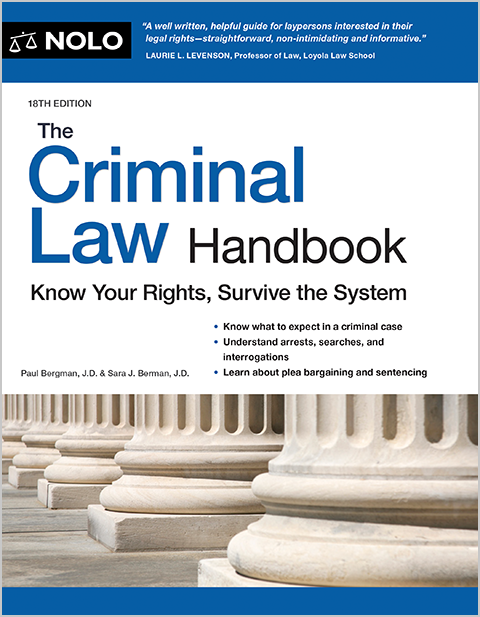If you're temporarily unable to work, you can get short-term disability in California. Learn what you need to qualify and how much you can receive in benefits.
The State of California requires all employees to pay into its short-term disability insurance (SDI) program through payroll deductions. When employees become unable to work due to disability, they can take short-term disability leave and collect temporary disability benefits from the program until they're either ready to go back to work or the benefits expire.
The SDI program is administered by California's Employment Development Department (EDD). The EDD estimates that the average weekly benefit in 2025 is $850.
- Which Employees Are Eligible for California Short-Term Disability Insurance?
- How You Can Maximize Your Benefits by Timing Your Base Period
- How Much Does California Pay in Short-Term Disability?
- How Long Can You Be on Short-Term Disability in CA?
- How to Apply for Short-Term Disability in California
- Getting California SDI With Other Disability Benefits
- Do I Need a Lawyer to Help Get Short-Term Disability Benefits?
Which Employees Are Eligible for California Short-Term Disability Insurance?
Employees who have received at least $300 in wages during their base period are eligible for SDI payments, assuming SDI deductions have been taken out of this pay. Once the EDD determines that an employee is eligible to receive short-term disability insurance, the agency will calculate their benefit based on a percentage of earnings within a specific timeframe (the "base period"). The base period is the twelve months that end just prior to the last complete calendar quarter before the employee files an SDI claim (more on this below).
What Counts as a Disability for California SDI?
Any time your doctor certifies that you can't do your job, you're disabled according to the EDD. You don't have to be unable to do any type of work, you just have to be unable to do the regular and customary duties of your job. So to qualify for short-term disability insurance in California, you must be under the care of a doctor who certifies that you're unable to work.
Pregnancy and elective surgery also count as disabilities for SDI purposes. You can generally receive SDI two to four weeks before you're due to give childbirth and for four weeks after your child is born (six weeks after for a C-section). Recovery from elective and cosmetic surgeries are covered by SDI, as long as your doctor certifies that you're unable to work after surgery for a period of time.
When Are Employees Disqualified From CA SDI?
In some situations, employees can lose their eligibility for SDI benefits. You won't be able to get short-term disability benefits if any of the following are true:
- You missed the doctor's appointment that the EDD set up.
- You're receiving unemployment benefits.
- You're receiving sick leave that equals your full salary or regular wages.
- You're receiving paid family leave benefits.
- You're receiving workers' comp payments that are higher than what you would receive from SDI.
- You're unable to work due to a felony.
- You're incarcerated after being convicted of a crime.
If none of the above conditions apply to you, you should be able to qualify for California short-term disability benefits.
How You Can Maximize Your Benefits by Timing Your Base Period
Your short-term disability payments are based on an average of your wages during the three-month calendar quarter of your base period when you made the most money. Because California uses your highest-paid quarter of your base period to calculate your weekly payment, the date you file your claim can affect your benefits amount. You can use this to your advantage by choosing the filing date that will give you the base period with the highest wages, but you must file a claim with the EDD within seven weeks of becoming unable to work.
The EDD calculates your base period as follows:
|
Date/Month of Claim |
Base Period |
|
January, February, or March |
The 12 months ending last September 30 |
|
April, May, or June |
The 12 months ending last December 31 |
|
July, August, or September |
The 12 months ending last March 31 |
|
October, November, or December |
The 12 months ending last June 30 |
For example, an SDI claim beginning November 16, 2025, will use a base period of July 1, 2024 through June 30, 2025. A claim beginning May 5, 2026 will use a base period of January 1, 2025 through December 31, 2025.
How Much Does California Pay in Short-Term Disability?
During your temporary disability leave, you'll be paid 70%-90% of the average wages that you earned during your highest-earning calendar quarter of your base period. If you worked two jobs during your base period, your average wages will include wages from both jobs.
Workers earning less than $62,025 a year will receive up to 90% of their average wages, while workers earning more income will get up to 70% of their average wages. But the maximum weekly amount you can receive in short-term disability benefits is $1,681 (in 2025).
The following chart lets you estimate your weekly benefit (to figure annual income, multiply your highest quarterly wage by four quarters).
|
Annual Income |
Highest Quarterly Earnings |
Weekly Benefit Amount |
|---|---|---|
|
Less than $1,200 |
Less than $300 |
Not eligible |
|
$1,200 to $2,889.99 |
$300 to $722.49 |
$50 |
|
$2,890 to $62,025.60 |
$722.50 to $15,506.40 |
90% of weekly wages |
|
$62,025.64 to $79,747.20 |
$15,506.41 to $19,936.80 |
$1,074 |
|
More than $79,747.20 |
$19,936.81 or more |
70% of weekly wages (up to a maximum of $1,681) |
You can determine the exact amount of benefits you'll receive using this chart of weekly SDI benefit amounts.
SDI payments aren't taxable in most cases.
How Long Can You Be on Short-Term Disability in CA?
You can receive up to 52 weeks of SDI benefits, provided you remain unable to work for that long. However, if you're self-employed (and have paid into the SDI system), you can receive benefits for only 39 weeks.
If you're in rehab for alcohol use disorder, you can qualify for 30 days of SDI benefits. If you need to stay longer than 30 days, your doctor can certify your need for continuing rehab and you can get an additional 60 days of SDI payments.
If you're in rehab for drug addiction, you can qualify for 45 days of SDI benefits. If you need to stay longer than 45 days, your doctor can certify your need for continuing rehab and you can get an additional 45 days of SDI payments.
How to Apply for Short-Term Disability in California
You have 49 days from becoming disabled to file a claim for short-term disability benefits. When you're ready to apply, you have several methods available to you.
File for SDI Online
The simplest method to start your claim for disability benefits is to file online at the EDD website. You'll need to have several methods of identification available, such as your valid California Driver's License or ID card, as well as your Social Security number. If you don't have a valid California ID or you've had a recent name change, you'll need to submit your application by mail.
Before you start your online application at the EDD website, make sure your doctor can complete their portion within EDD's online system.
Submit Your Claim by Mail
You can also file your SDI claim application by mail. First, you'll need to get a blank Form DE 2501, Claim for Disability Insurance Benefits. You can request one online and the EDD will mail it to you. The form will contain a pre-addressed envelope that you can mail back to the following address:
State of California
Employment Development Department
PO Box 989777
West Sacramento, CA 95798-9777
Additionally, you can request a paper form by calling 800-480-3287 and selecting DI Information, option 3.
Visit a Disability Insurance Office
You can also visit your nearest Disability Insurance and Paid Family Leave office using the agency's address locator to get a blank Form 2501. Representatives at the office can help answer any questions you have about the short-term disability program.
Regardless of how you apply, you're responsible for gathering and submitting your employer information and your doctor's certification of disability. Once your completed claim is received, if the EDD approves it, you'll be sent a notice of eligibility that includes your estimated weekly benefit amount. SDI benefits are typically paid within two weeks of approval.
Getting California SDI With Other Disability Benefits
If you're receiving another state or federal disability benefit (or employer-paid sick time), the amount of your SDI payment may be reduced. (Wages you earn for any part-time work will also be subtracted from your SDI amount.)
Any paid sick time or PTO time that you receive while on SDI will be deducted from your SDI benefit amount. (Pure vacation time, however, won't affect your SDI payment.)
You may be able to ask your employer to "integrate" your SDI benefit with your sick pay or PTO. If your employer agrees, that means they'll pay you enough sick time that, when combined with SDI, you'll receive the same amount as your normal wages.
To do this, you can write "Integrated Benefits" on your application form for the type of pay you're receiving from your employer (or note this when you file online). Additionally, you can receive sick time or PTO for the first week since you became disabled, as SDI benefits only start on the eighth day.
If you apply and are approved for federal Social Security disability benefits, the state may subtract the SSDI benefit amount from your SDI payment. Keep in mind that Social Security disability is only available to people who are permanently disabled, or disabled for at least a year, so this provision will likely only apply to people who are nearing the end of their 52 weeks of short-term disability.
Do I Need a Lawyer to Help Get Short-Term Disability Benefits?
If your employer isn't cooperating with you or the EDD on your disability insurance application—or you aren't certain of your leave rights—you may want to speak to an employment lawyer. Under the SDI program, your job isn't protected, nor do you have reinstatement rights. But you may have job protection under other state and federal laws, such as California's Family Rights Act, the federal Family and Medical Leave Act (FMLA), and the Americans with Disabilities Act (ADA).
For more information, see our article on your right to time off work in California.
- Which Employees Are Eligible for California Short-Term Disability Insurance?
- How You Can Maximize Your Benefits by Timing Your Base Period
- How Much Does California Pay in Short-Term Disability?
- How Long Can You Be on Short-Term Disability in CA?
- How to Apply for Short-Term Disability in California
- Getting California SDI With Other Disability Benefits
- Do I Need a Lawyer to Help Get Short-Term Disability Benefits?

